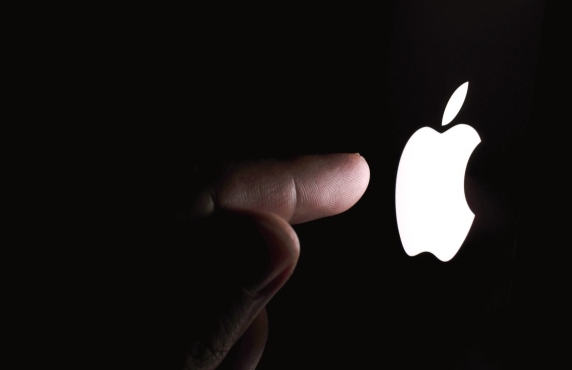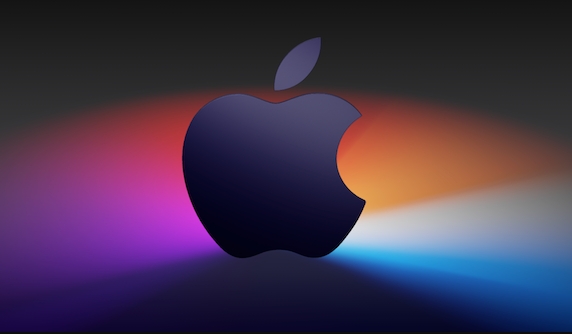How to install macOS on a Mac in Target Disk Mode?
Jul 31, 2025 am 07:05 AMIf the Mac cannot start normally or needs to reinstall macOS but cannot run the installer, you can use the target disk mode. Prepare two Macs, appropriate data cables, macOS installer on the host, and place the target Mac in target disk mode. 1. Close the target Mac and connect to the host; 2. Press and hold the T key to turn on the computer to enter the target disk mode; 3. After the host recognizes the target Mac's disk, open the installation program and select the disk for installation; 4. If necessary, use the disk tool to erase or partition; 5. Disconnect and start the target Mac separately after the installation is completed. Be careful to ensure that the data cable supports transmission and both devices support the target disk mode. If the disk is not recognized, try to use the disk tool first.

If your Mac isn't booting properly or you need to reinstall macOS on a machine that can't run the installer normally, Target Disk Mode can be a lifesaver. It lets you use one Mac's storage as an external drive connected to another Mac, which makes installing macOS possible even when the affected Mac can't start on its own.

What You Need Before Starting
Before jumping into the installation process, gather the essentials:

- Two Macs : One that needs macOS reinstalled (the target) and another working Mac (the host).
- A proper cable : Depending on your Mac models, you might need a Thunderbolt cable, FireWire cable, or USB-C cable.
- macOS Installer on the host Mac : Make sure it's downloaded and ready to go.
- Target Mac in Target Disk Mode : This is how you'll access its drive from the host.
Once everything is ready, you can move on to getting the target Mac into Target Disk Mode.
How to Boot Into Target Disk Mode
Getting a Mac into Target Disk Mode is simple, but timing matters:

- Turn off the target Mac completely.
- Connect it to the host Mac using the correct cable.
- Power on the target Mac while holding down the T key .
- You should see a Thunderbolt or Firebolt icon appears—dependent on your Mac model—that means it's in Target Disk Mode.
On the host Mac, the internal drive of the target Mac will show up like any other external drive. At this point, you're ready to install macOS onto it.
Installing macOS on the Target Mac's Drive
Now that the host Mac sees the target Mac's drive, follow these steps:
- Open the macOS installer on the host Mac.
- When prompted to choose a disk, select the target Mac's drive—not the host's!
- If needed, use Disk Utility to erase or partition the drive first. Make sure it's formatted correctly for macOS (usually APFS or Mac OS Extended).
- Proceed with the installation. It may take 15–45 minutes depending on the Mac and macOS version.
- Once done, shut down the host Mac and disconnect the cable.
After this, power on the target Mac by itself—it should now boot into the freshly installed macOS.
Notes and Troubleshooting Tips
Not all Macs support Target Disk Mode over every kind of connection. Some older models require FireWire, while newer ones work via Thunderbolt or USB-C. If nothing happens when you press T, double-check:
- The cable supports data transfer (not just charging).
- Both Macs support Target Disk Mode.
- The target Mac is fully powered off before starting.
Also, if the macOS installer doesn't recognize the target drive, try running Disk Utility first to ensure the drive is properly formatted and partitioned.
That's about it—you've successfully installed macOS on a Mac using Target Disk Mode.
The above is the detailed content of How to install macOS on a Mac in Target Disk Mode?. For more information, please follow other related articles on the PHP Chinese website!

Hot AI Tools

Undress AI Tool
Undress images for free

Undresser.AI Undress
AI-powered app for creating realistic nude photos

AI Clothes Remover
Online AI tool for removing clothes from photos.

Clothoff.io
AI clothes remover

Video Face Swap
Swap faces in any video effortlessly with our completely free AI face swap tool!

Hot Article

Hot Tools

Notepad++7.3.1
Easy-to-use and free code editor

SublimeText3 Chinese version
Chinese version, very easy to use

Zend Studio 13.0.1
Powerful PHP integrated development environment

Dreamweaver CS6
Visual web development tools

SublimeText3 Mac version
God-level code editing software (SublimeText3)

Hot Topics
 Where is the pycharm interpreter?
May 23, 2025 pm 10:09 PM
Where is the pycharm interpreter?
May 23, 2025 pm 10:09 PM
Setting the location of the interpreter in PyCharm can be achieved through the following steps: 1. Open PyCharm, click the "File" menu, and select "Settings" or "Preferences". 2. Find and click "Project:[Your Project Name]" and select "PythonInterpreter". 3. Click "AddInterpreter", select "SystemInterpreter", browse to the Python installation directory, select the Python executable file, and click "OK". When setting up the interpreter, you need to pay attention to path correctness, version compatibility and the use of the virtual environment to ensure the smooth operation of the project.
 The difference between programming in Java and other languages ??Analysis of the advantages of cross-platform features of Java
May 20, 2025 pm 08:21 PM
The difference between programming in Java and other languages ??Analysis of the advantages of cross-platform features of Java
May 20, 2025 pm 08:21 PM
The main difference between Java and other programming languages ??is its cross-platform feature of "writing at once, running everywhere". 1. The syntax of Java is close to C, but it removes pointer operations that are prone to errors, making it suitable for large enterprise applications. 2. Compared with Python, Java has more advantages in performance and large-scale data processing. The cross-platform advantage of Java stems from the Java virtual machine (JVM), which can run the same bytecode on different platforms, simplifying development and deployment, but be careful to avoid using platform-specific APIs to maintain cross-platformity.
 Commands and configurations for starting Apache service in macOS system
May 16, 2025 pm 10:00 PM
Commands and configurations for starting Apache service in macOS system
May 16, 2025 pm 10:00 PM
The command to start the Apache service on macOS is sudoapachectlstart, and the configuration file is located in /etc/apache2/. The main steps include: 1. Edit the httpd.conf file, modify the Listen port such as Listen8080; 2. Adjust the DocumentRoot path to the personal directory such as /Users/your_username/Sites, and update the corresponding permission settings; 3. Use the sudoapachectlgraceful command to restart Apache to ensure that the configuration takes effect; 4. Enable the mod_deflate module to compress data to improve page loading speed.
 How to stop Microsoft Edge automatic updates
May 21, 2025 am 10:12 AM
How to stop Microsoft Edge automatic updates
May 21, 2025 am 10:12 AM
How to stop Microsoft Edge Automatically Update Microsoft Edge is the default browser that comes with Windows 11. Earlier, the Edge browser received updates as the Windows operating system was updated. However, the Edge browser based on Chromium has changed that. The browser will now automatically update in the background without your knowledge. In this article, we will explain how to stop automatic Microsoft Edge updates in Windows 11 and macOS. Related: How to disable automatic updates in Google Chrome? Check for automatic edge updates Chromium-based Edge vs. Goo based on Chromium backend code
 MySQL installation tutorial teach you step by step the detailed steps for installing and configuration of mySQL step by step
May 23, 2025 am 06:09 AM
MySQL installation tutorial teach you step by step the detailed steps for installing and configuration of mySQL step by step
May 23, 2025 am 06:09 AM
The installation and configuration of MySQL can be completed through the following steps: 1. Download the installation package suitable for the operating system from the official website. 2. Run the installer, select the "Developer Default" option and set the root user password. 3. After installation, configure environment variables to ensure that the bin directory of MySQL is in PATH. 4. When creating a user, follow the principle of minimum permissions and set a strong password. 5. Adjust the innodb_buffer_pool_size and max_connections parameters when optimizing performance. 6. Back up the database regularly and optimize query statements to improve performance.
 Which is better, uc browser or qq browser? In-depth comparison and evaluation of uc and qq browsers
May 22, 2025 pm 08:33 PM
Which is better, uc browser or qq browser? In-depth comparison and evaluation of uc and qq browsers
May 22, 2025 pm 08:33 PM
Choosing UC browser or QQ browser depends on your needs: 1. UC browser is suitable for users who pursue fast loading and rich entertainment functions; 2. QQ browser is suitable for users who need stability and seamless connection with Tencent products.
 How to update the system's own software
May 19, 2025 pm 06:48 PM
How to update the system's own software
May 19, 2025 pm 06:48 PM
Updating the software that comes with macOS is simple and important because it can fix bugs, improve performance, bring new features and security improvements. You can update through the "Software Update" option in "System Settings" or "System Preferences" and follow the prompts. If you encounter problems, try restarting your Mac or checking your network connection, and the Apple Support page also provides a solution. It is recommended to keep the system up to date, back up data before update, and ensure Wi-Fi and sufficient storage space. Update details can be viewed on Apple's official website.
 How to adjust screen brightness on macOS
May 16, 2025 pm 08:39 PM
How to adjust screen brightness on macOS
May 16, 2025 pm 08:39 PM
Adjusting screen brightness on macOS can be fine-tuned using the brightness adjustment keys on the keyboard or through system preferences. 1. Press the Sun icon keys on the F1 and F2 keys to quickly adjust the brightness. 2. Drag the slider in the "Display" option in "System Preferences" to make minor adjustments. 3. Enable the "Auto-adjust brightness" function to make the brightness change with the ambient light. 4. Use the "Night View" mode to reduce blue light to protect your eyes. 5. Developers can use AppleScript to automate brightness adjustments.






